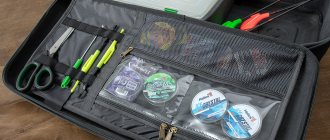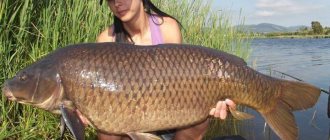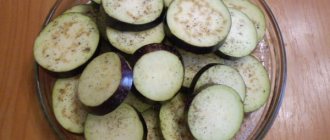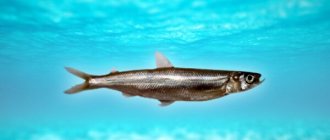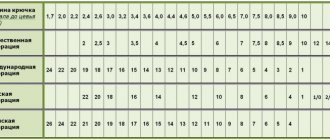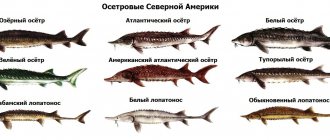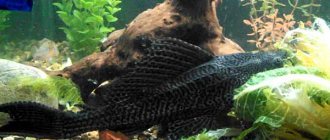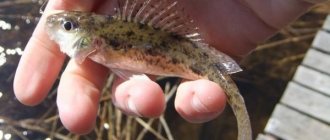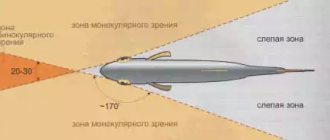Yuri 02.09.2020 537
Nutritious and attractive bait for fish is the key to a good bite and a decent catch. Stores offer a wide selection of baits for admirers of this fishing art. Even a professional will not always be able to choose the right mixture for certain fishing conditions. You have to make combinations of baits to find the optimal taste, color and composition of ingredients.
The role of such bait is perfectly performed by compound feed prepared at home. This product is available everywhere and has a low cost. However, not every angler believes in the effectiveness of this nutrient mixture, which has a positive effect on the fishing process. Compound feed is not a universal and stable substance (there are different types and ingredients). This product is balanced with nutritional components. The composition is determined by food components, vitamins and microelements, which affect the accelerated development of the fish’s body.
Feed composition
The composition of the feed cannot be called a universal and stable bait substance in terms of the type and quantity of ingredients. Depending on the manufacturer of the product and its purpose, the mixtures differ significantly from each other. In general, a combined bait composition can be characterized as a product balanced with certain nutritional components that has a beneficial effect on representatives of the ichthyofauna. The mix contains not only the food components themselves, but also the recipe is strictly dosed with vitamins and various microelements that affect the accelerated development of the fish’s body.
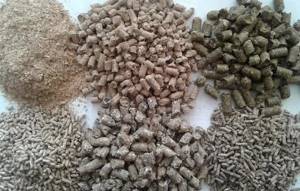
In the vast majority of cases, groundbait from mixed feed is based on ground crackers or bran of cereal crops. An obligatory and important component of the compositions is protein . It is included in feed mixtures in the form of soybean or sunflower cake. Complex recipes consisting of 40–50 elements, in addition to the listed and mandatory products, contain ground legumes, sapropels, mineral additives, meal, animal components in the form of fish or bone meal, as well as ground shells. In terms of chemical composition, nutritional mixtures include substances such as proteins, amino acids, animal and vegetable fats, carbohydrates, a complex of vitamins, as well as all kinds of enzymes and premixes that act as dietary supplements.
The mechanical part of the formation of feed combinations helps to increase the efficiency of product consumption by fish, the purpose of which is to minimize residues clogging the reservoir. Thus, the requirements for the strength and density of compressed granules, time-optimal solubility of feed, as well as their balance in nutritional and energy value are met.
Feed recipes for growing fish
Domestic and world practice suggests that feeding fish with complete mixed feed allows you to obtain maximum productivity while simultaneously reducing feed costs for weight gain, as well as ensuring and maintaining the health of farmed fish.
To grow different types and ages of fish, research organizations have developed a number of feed recipes. the compositions of which are presented below, approved by the Ministry of Fisheries of the USSR.
These feed recipes are complete, which are recommended for use in intensive and semi-intensive cultivation of different types and ages of fish in ponds, mesh cages, cement pools and other containers.
VNIIPRKH (main), UkrNIIRKH, LzNIIRKH, KrzsNIIRKH, KaspNIIRKH and others took part in their development.
RECIPE VBS-RZh-81 production compound feed
for growing carp fingerlings weighing from 1 to 25 g and above in pond farms
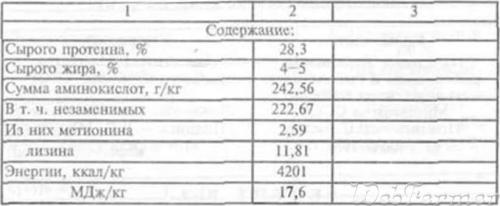
RECIPE for MBP production compound feed for growing commercial carp in pond farms
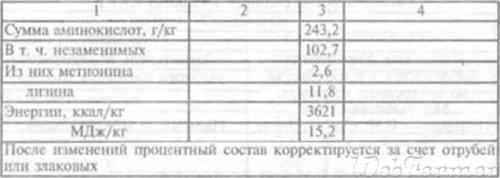
It makes sense to use compound feed only if the financial component is important (a kg of feed is cheaper and, possibly, a greater increase in meat). If the financial side is not taken into account, the best would be a combination of sprouted/steamed wheat (if not, you can use other grains) and natural (from the pond) plant and animal feed. In addition, it will not be superfluous to feed the carp with finely chopped young, soft grass. Carp especially loves, for example, clover. You can use corn, but it doesn’t make much sense due to its low nutritional value. You can also give earthworms or dung worms if it is possible to grow them.
You can also feed them just wheat. Sprouted is more nutritious and tastier for fish. There is no easier way than to germinate wheat. Pour wheat into a bag and throw it into the water. The next day, take it out and put it on dry land. That's all. On the third day the food is ready. And so on, like a conveyor belt: take one bag out of the water, fill another and throw it into the water, and pick up the third and feed it. Works 1-2 minutes.
From the second half of August, the number of food organisms in the water decreases greatly. This deficiency cannot be covered by feeding grain or soybean meal. Thus, there is a nutritional deficiency in the ponds and it is impossible to do without feed.
With animal food, carp receives essential amino acids that the body needs. Plant-based foods also contain important amino acids, but they are of lower quality than animal-based amino acids. Therefore, if there is a shortage of zooplankton, the lack of amino acids cannot be completely compensated for by plant nutrition alone. This leads to the fact that with a long-term deficiency of amino acids in the feed, the condition of the fish deteriorates, and resistance to parasites and pathogens decreases.
If the carp is well fed, with high-quality and proper food - it gains a lot of fat during the season - this is the key to consistently successful (with a minimum of waste) wintering and obtaining fish with excellent taste.
Principles of feeding fish in ponds
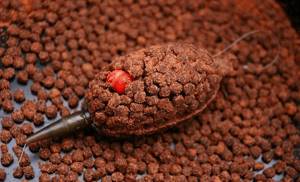
One of the most common cases of using pure feed for bait is fishing on a paid pond. In such fishing grounds, the inhabitants of reservoirs are accustomed to a balanced and regular diet and do not need specific feed containing attractants and other appetite stimulants. It is important for the fisherman to note what kind of food the fish are fed, and what fraction it has, and also find out about the specific time of serving the delicacy. Knowing this kind of information, they build their own strategy, determining feeding points and the hours of the most likely fish release, thereby increasing the chances of success.
At the pay sites, the fish are fed early in the morning, using mixed feed in granules for this purpose or filling the bulk mixtures with water to obtain viscosity. In small ponds, granules or moistened mash are poured directly onto the hard bottom. In large fish farms, special floating feeders are used for these purposes. The number of volumes required for supplying feed mixtures is judged by the remains of granules after the control time mark, during which the fish must absorb the filled mixtures. To do this, use a net to select bottom soil, analyzing the remaining food and adjusting the amount of feed for the next day. On paid fishing grounds, catching carp using mixed feed is especially effective in the summer. The carps quickly get used to the supplied composition and the constant feeding point, going out to them strictly according to the schedule.
Important! Paid ponds are characterized by a cyclical bite, the peak of which falls precisely during feeding hours.
This period of time is followed by a long pause of 4–5 hours of complete no-biting, after which you can count on the resumption of activity by rested and hungry fish, luring them to the fishing point with an already known and proven type of bait. The main thing is that the product is fresh without signs of nitrous or moldiness, which will cause the opposite effect, scaring away the trophy .
Preparation of bait from fish feed
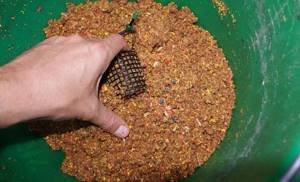
Preparing groundbait from mixed feed is quite simple, but the method of preparation will depend on the type of mixture. So, with a granular product, you can cover a rich feeding table without any type of additives, gradually holding the fish with new casts in the case of long-term fishing, lasting two or three days. The optimal solution would be to properly steam the mixed feed for fishing, bringing the mixture to a viscous state, in case of short-term fishing.
Depending on the hunting season, flavorings or additional ingredients are added to the plastic steamed complementary food. It’s even easier to make bait with loose substances. After all, all that remains is to mix crushed grain or peas into the base, mix it with boiled porridge or animal additives, such as chopped worms, bloodworms or maggots, and then moisten it and begin fishing. Depending on the requirements for feed according to the fishing conditions, mixes are diluted with earth, clay and sand, thoroughly mixing the ingredients, molding them into balls and adding them to the feeding area.
Important! Fishing practice has proven that moisturizing bait mixtures should be done not with tap water, but with portions of water taken directly from the fished reservoir.
It will be useful to gain practice by including so-called highlights in homemade bait recipes, in the form of special flavors or attractants that stimulate the fish to approach the fishing points. The nuances of using aromatic additives are analyzed when fishing in each individual reservoir, noting the more effective options in terms of catches, and subsequently using them on an ongoing basis. After all, your homemade bait should be more attractive to the fish than the owner’s ordinary food and should attract the fish to the hunting site faster.
Principles of feeding with compound feed
Bait does not mean saturating the fish with food, but attracting its attention and increasing its appetite. How to distribute feed into portions?
- Before you start fishing, throw in 2-3 handfuls, and after the bite subsides, add a pinch at a time so as not to miss the fish.
- We throw in the feed in small portions before each new cast of the tackle.
As the experience of professionals shows, you should not feed the fish during the active biting process - only when it weakens. At the same time, we produce bait in several places to quickly change the fishing location. For long casts we use a special technical tool - a slingshot. Some use mesh baits that sink to the bottom of the reservoir, the bait in which is gradually washed away by water.
Compound feed acts as an excellent way to feed fish. This bait is quite economical, since one mixing of the feed allows you to use it for several fishing trips. If we go for carp, we add something edible to the mixture. It is not recommended to use protein ingredients in the summer.
TAGS:
Feed baits
Fish combination mixtures, as well as bird food of this type, similar in recipe, in addition to preparing bait, can be successfully used on fishing trips, playing the role of the main bait. Granular types of the product are especially convenient to use. To a large extent, these are small in length, about 15–20 mm, cylindrical, with a diameter of 5–7 mm, pieces of compressed nutritional composition.
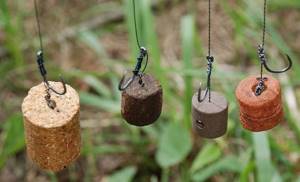
When choosing feed for fish of these shapes, it is safely used in installations on hair equipment when catching many types of carp fish. An example of the practical use of pellets as the main bait are pellets, familiar to every carp angler. Manufacturers of pellets, in addition to producing conventional cylinders, produce pellets with mounting holes, which makes it possible to include bait in the equipment not only in combination with a hair rig, but also to attach the bait in the classic way, directly on the hook.
Dry, loose and free-flowing mixtures of small fractions are moistened with water or sunflower oil, kneading the resulting substance to the state of an elastic dough, which is used as bait, on par with ordinary flour dough, where the basis for grinding is wheat, rye or oats. The dough is seasoned with aromatic additives and tinted to the color required for fishing conditions, mounted on hooks equipped with springs to hold the liquid bait. The absence of this type of hook can be compensated for by adding ordinary medical cotton wool to the kneaded dough, which increases the reliability of attaching the bait. But these two bait options are not yet a complete list of the capabilities of feed mixtures in the production of baits.
Resourceful fishermen use the dough to prepare boilies, which are especially popular in carp fishing. The elastic mixture is rolled into balls of various diameters, then subjected to heat treatment, briefly boiled in oil or water, and dried at room temperature. The resulting product has a long shelf life and its parameters do not differ from factory boilies.
Feed for chickens
Compound feed is produced taking into account the orientation of the chickens. Complete feeds have been developed for egg-laying chickens:
- “Solnyshko” and PK-2 – they are given from the first days of life. PK-2 can be given for up to 7 weeks. The feed is finely ground - in the form of cereals or granules.
- PC-3 – given after 7 weeks to 3.5 months.
Chickens of meat breeds are given feed PK-5. The feeding period is determined taking into account the feeding system. The food is made in the form of small cereals - it is convenient for babies to peck. PK-5 contains active components that promote weight gain.
Feed for chickens, as well as for adult chickens, can be prepared independently. The starting mixture should contain the following ingredients:
- corn – 49%;
- sunflower cake/meal – 18%;
- wheat – 12%;
- fish/meat and bone meal – 8%;
- return – 3%;
- plant components – 3%;
- feed fat – 1%.
The ingredients are first crushed and only then mixed. You need to add to the feed those ingredients that have already been introduced into the chickens’ diet so that there are no digestive problems.
Broiler chickens can be given dry food from the first days of life, and laying chicks - only after the first week.
Chicks are not given food in granules - they will not be able to crush and swallow them. Before giving granulated feed, it is necessary to grind it.
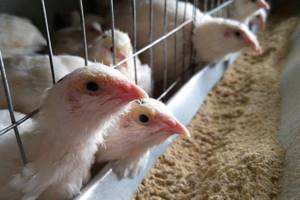
Benefits of fish feed
There is no doubt that fish combined feed mixtures have a number of significant advantages and undeniable advantages in relation to even purchased professional baits. Comparing the price parameter, and it is noticeably lower for the product we are considering, one can notice significant differences in the cost level of these mixture options, although in terms of final effectiveness, sometimes there is no difference in application at all.
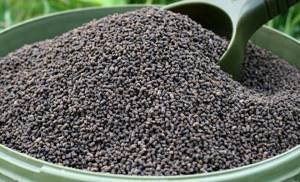
The versatility of the composition is expressed in the fact that it is used both as bait and in the direction of direct bait, which can be prepared in several different formats. Sometimes the fisherman does not even have to expend effort on preparing baits or baits from this product, using the factory version of the mixture or granules. This strategic technique is especially successfully used by fishermen on paid ponds with local fish accustomed to this type of food.
The balance of feed with nutritious ingredients, substances that stimulate the growth and appetite of fish, makes it possible to prepare not only bait for bream, carp and other peaceful fish, but also cases of attracting perch, trout, catfish and grayling to fishing spots. And one of the important aspects of the use of compound feeds is their suitability as a basis for preparing all kinds of options for homemade homemade bait mixtures.
As a rule, basic microelements and biologically active additives are not required for cooking, since the feed is already seasoned with these ingredients. All that remains for the fisherman is to add an attractive animal component, diluents, attractants and, if necessary, dyes to the homemade bait and begin the process of forming a bait table at the selected fishing point.
Compound feed for carp - like bait
Last year I tried to add fish feed to the bait when fishing for carp, the result was not bad. Has anyone tried using it when catching other fish? Tell me, who knows where this compound feed can be purchased, except for fish farms.
When catching carp at fish farms, it may make sense to buy feed locally. I noticed that in Osenki and Lotoshino, for example, the compound feed is very different (at least in appearance, and the fish can be accustomed to exactly what they are constantly fed. In Lotoshino I fed one compound feed - very effectively, but on porridge and store-bought bait different, others, it seems, the result was not always good. Good luck! Sergey.
In addition to carp, I add ground feed to bait mixtures for feeders when catching bream on the feeder, they really respect this stench and all sorts of useful ingredients.
